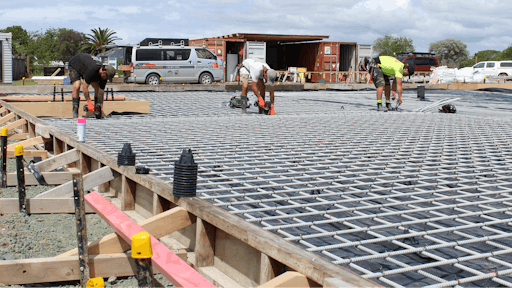Unlocking the Environmental Benefits of Recycled Compounds in Building and Design
In the realm of building and design, the utilization of recycled composites holds considerable guarantee for enhancing sustainability techniques and lowering environmental effect. The change in the direction of a more sustainable future in these markets pivots on opening the full potential of recycled composites.

Environmental Impact Decrease
The decrease of ecological effect via using recycled compounds in building and construction and design plays an essential role in sustainable methods. By integrating recycled compounds right into building materials, the building and construction market can considerably reduce its carbon footprint and contribute to a much more environmentally friendly future. These sustainable products, made from repurposed plastics, wood fibers, or various other recycled components, supply a viable alternative to standard building and construction materials without endangering on high quality or longevity.
Recycled compounds aid draw away waste from garbage dumps and lower the demand for removing resources, thus conserving natural resources. Furthermore, the manufacturing procedure of these composites usually takes in much less energy and discharges fewer greenhouse gases contrasted to creating virgin products (composites). This change towards utilizing recycled composites not only lessens environmental damage however also advertises a round economy by urging the reuse of products that would certainly otherwise be disposed of
Waste Reduction
With a focus on reducing waste in building and style, the integration of recycled compounds uses a sustainable option to minimize environmental effect. Waste minimization is a vital element of lasting methods, and the usage of recycled compounds offers a chance to attain this objective successfully. By using materials that have currently served their first purpose, such as recycled plastics or redeemed timber fibers, the construction and layout industries can substantially reduce the quantity of waste produced and sent out to garbage dumps.
Recycled composites have the potential to draw away significant amounts of waste from standard disposal approaches, adding to an extra circular economic climate where resources are made use of efficiently. In addition, the production procedure of recycled composites usually eats much less energy and generates less exhausts compared to virgin products, further minimizing the ecological impact of building and construction and layout tasks.
Executing waste reduction methods via the unification of recycled composites not only helps in conserving natural deposits yet also promotes a much more sustainable technique to structure and designing for a greener future.
Power Conservation
Including recycled compounds not just minimizes waste in construction and layout yet likewise plays a critical role in enhancing power conservation techniques within the market. Using recycled compounds in building can dramatically add to power preservation via numerous ways. The manufacturing of virgin products normally needs significant power inputs, whereas utilizing recycled composites takes in much less energy, thereby lowering overall power consumption. Additionally, incorporating recycled compounds can add to better insulation properties in buildings, reducing the need for too much heating or cooling, and subsequently reducing energy usage for climate control. The light-weight nature of numerous recycled composites can lead to lighter structures, calling for much less power for transportation and setup. By promoting the use of recycled compounds in construction and style, the market can make significant strides in the direction of accomplishing energy effectiveness and minimizing its carbon footprint, eventually adding to a much more lasting constructed atmosphere.
Carbon Impact Reduction
Enhancing sustainability methods with the use of recycled composites in construction and style dramatically decreases the carbon impact of the industry. By incorporating visit the site recycled materials into the production of compounds, the requirement for virgin resources reduces, bring about lower energy intake and greenhouse gas exhausts related to conventional manufacturing processes. This decrease in carbon footprint is vital in combating environment change and advertising a more eco-friendly approach to building and layout.
The carbon impact decrease achieved via the fostering of recycled compounds aligns with the international press towards lasting practices and the decrease of commercial discharges. Eventually, by focusing on the combination of recycled composites, the sector can make significant strides in reducing its carbon impact and contributing to an extra lasting future.
Sustainable Future
The assimilation of recycled composites in construction and design not just addresses prompt ecological worries however also lays a strong structure for a lasting future in the market. By incorporating recycled composites right into building materials and items, the construction and design industries can significantly reduce their dependence on virgin resources, bring about a much more circular economy. This change in the direction of sustainability is vital for minimizing the environmental effect of standard construction techniques, which frequently cause high levels of waste generation and source exhaustion.

Final Thought
Finally, recycled composites use substantial environmental benefits in building and layout by decreasing environmental impact, decreasing waste, conserving energy, decreasing carbon footprint, and promoting a sustainable future. Welcoming making use of recycled composites can add to a much more environmentally-friendly strategy to structure and layout, inevitably causing an extra sustainable and greener future for all.
The decrease of environmental influence via the usage of recycled composites in construction and design plays an essential role in lasting practices.With an emphasis on reducing waste in construction and layout, the integration of recycled compounds offers a lasting option to decrease ecological effect. By promoting the use of recycled compounds in building her response and style, the industry can pop over to these guys make substantial strides towards attaining energy performance and reducing its carbon footprint, inevitably adding to a more sustainable developed environment.
